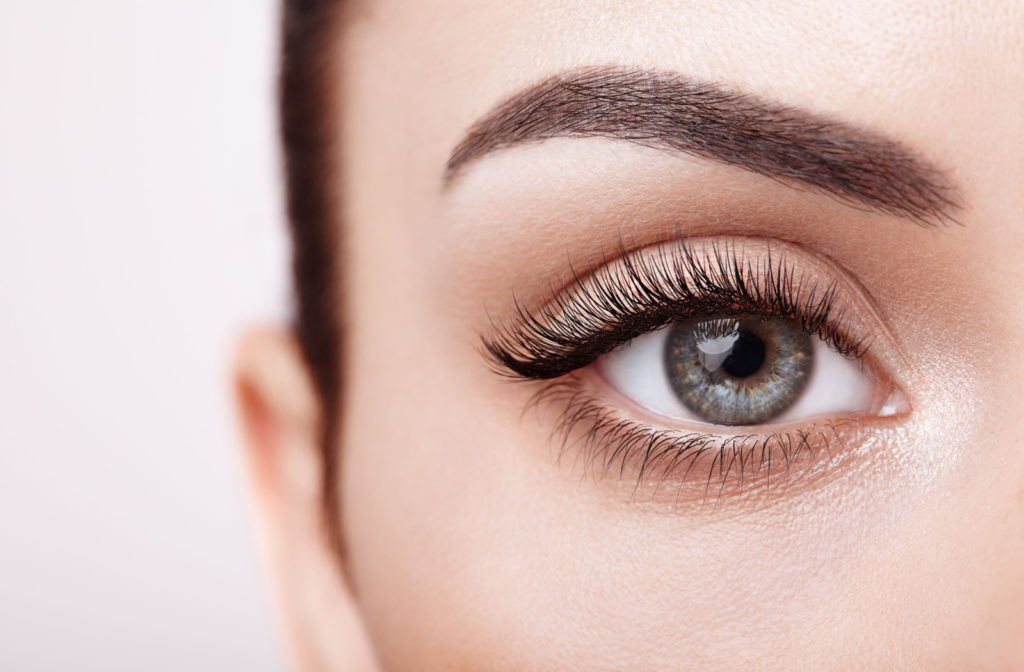Eyelash extensions have become a popular beauty trend, offering individuals the allure of longer, fuller lashes without the hassle of daily mascara application. However, amidst the glamor and convenience, concerns have arisen about the potential risks associated with eyelash extensions, including the development of blepharitis.
Eyelash extensions can indeed cause blepharitis. However, it is not the lashes themselves that are the issue, but rather the process of applying or removing them, hygiene practices, and the glue used that can lead to the condition. Sometimes, an allergic reaction to the adhesive can also be the culprit.
Regular eye exams can help with overall health and eye maintenance, helping to keep conditions like blepharitis in check. The staff at Dr. Henslick Vision Center want you to feel confident and comfortable. Our goal is to make sure that all your eye needs are met.
Understanding Blepharitis
Blepharitis is an inflammation of the eyelids. It’s a common condition that can cause discomfort and may interfere with normal tear production.
Blepharitis is usually caused by bacteria or dandruff from the scalp and eyebrows. While this condition can be annoying, it usually doesn’t cause any permanent damage to your vision.
Symptoms of Blepharitis
Symptoms can include redness, itching, irritation, and the formation of crusts or scales along the eyelid margin. You might also experience foamy tears and sensitivity to light. While blepharitis can have various causes, including bacterial or fungal infections, eyelash extensions have been implicated as a potential trigger.
Different Types of Blepharitis
Blepharitis can be categorized into two main types:
Anterior Blepharitis
Anterior blepharitis affects the front of the eyelids where the eyelashes are attached and is often caused by bacteria or dandruff from your scalp and eyebrows.
Posterior Blepharitis.
Posterior blepharitis affects the inner edge of your eyelids, near your eyeball. It’s usually linked to issues with the oil glands in this part of your eyelid.
Can You Get Blepharitis from Eyelash Extensions?
The short answer is yes, although it’s important to note that not everyone who gets eyelash extensions will develop blepharitis.
Blepharitis accounts for almost 80% of all complications from eyelash extensions. In some cases, poor eye care after getting the extensions can lead to too many lash mites, which can cause blepharitis. Not to mention, bacteria and oil buildup on the eyelids introduced during the application process can trigger the condition, too.
Several factors contribute to the risk of developing this condition:
- Poor hygiene practices: Improper hygiene during the application and maintenance of eyelash extensions can increase the likelihood of bacterial or fungal growth along the eyelid margin. Failure to clean the lashes regularly or using dirty tools can introduce foreign particles and microorganisms that may lead to inflammation.
- Allergic reactions: Some individuals may experience allergic reactions to the adhesive used to attach eyelash extensions. Allergic reactions can cause inflammation and irritation of the eyelids, potentially contributing to the development of blepharitis.
- Heavy or improperly applied extensions: Excessive weight or tension from heavy or improperly applied eyelash extensions can place stress on the eyelid margin, disrupting the normal function of the eyelid glands. This disruption can lead to gland blockages, increasing the risk of inflammation and blepharitis.
- Inadequate removal: Improper removal of eyelash extensions, such as pulling or tugging at the lashes, can damage the natural lashes and irritate the eyelid skin, paving the way for inflammation and blepharitis.
Preventing Blepharitis with Eyelash Extensions
There’s no guaranteed method to avoid blepharitis from eyelash extensions, but certain strategies may provide some protection.
- First, cleanliness is paramount. It’s crucial to wash your face and eyes at least twice daily, always making sure that your hands are clean before touching your face or eyes to prevent bacterial spread.
- Next, consider avoiding known triggers. Common culprits such as mascara, makeup, contact solution, and lash extensions can exacerbate blepharitis, so using these products sparingly or not at all might be beneficial.
- Finally, if relinquishing your lashes, contacts, or mascara isn’t an option, there are ways to mitigate risk. For instance, replace your mascara every 3 months, use fresh contact solution that hasn’t expired as directed, and make sure that any lash extensions are applied by a licensed professional using sterilized equipment.

Protecting Your Eyes While Enhancing Your Beauty
While eyelash extensions can enhance your beauty and confidence, it’s essential to be aware of the potential risks, including the development of blepharitis.
By prioritizing proper hygiene, choosing good products, and listening to your body’s signals, you can enjoy beautiful lashes while minimizing the risk of adverse effects. As always, consult your eye care professional at Dr. Henslick Vision Center if you have any concerns or experience any unusual symptoms related to your eyelash extensions. We’re here for you, so get in touch with us today.



